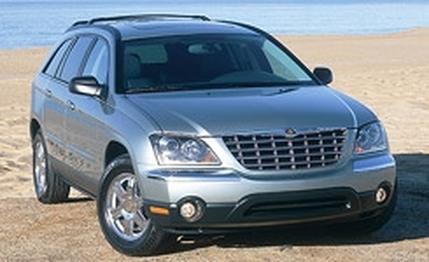
 Road Test
Road Test
At the Pacifica's introduction in San Diego, California, Chrysler's guys were emphatic that their new vehicle defied categorization. In fact, they even provided us with a ready-minted descriptor for it. The Pacifica, they insisted, is a "sport tourer."
That means it's not quite an SUV and certainly not a minivan. Later on, after we'd driven the car for the first time, one of the PR guys came up and asked us how it drove. "A bit like a minivan," we ventured, only slightly tongue in cheek. But he wasn't having any of it. "It's not like a minivan," he stated in tones that clearly suggested we hadn't been listening. And maybe he had a point. After all, the Pacifica is built on a unique platform, even if it proceeds down the same Windsor, Ontario, assembly line as Dodge Caravan and Chrysler Town & Country minivans.
As anyone can see, its design is fresh and original despite the limitations of a two-box profile, and the Pacifica has rear side doors that open conventionally instead of the sliding portals found on those despised nannyvans. From the front, it's almost a car. From the back, it's an attractive SUV, and from the side there's a hint of PT Cruiser in its wedge-shaped profile.
So the Pacifica is undeniably good-looking, with contours and volumes that do a decent job of diminishing the impression of size. But this is a big vehicle. Its 116.3-inch wheelbase falls exactly midway between that of a short-wheelbase Chrysler minivan and a long-wheelbase version. It is longer than every unibody SUV on the market, and it has such a wide track that only the Honda Pilot, the Acura MDX, and the jumbo utes have a broader stance.
The good news is that it isn't the tallest vehicle in the class. (At 66.5 inches, it is marginally higher than the Lexus RX330.) So getting in is a comfortably convenient exercise, with no climbing required. It is also remarkably roomy, with plenty of space for the occupants of the first two rows. There's so much room in this thing that the second-row seats-a pair of leather-bound captain's chairs in our AWD model-provide fore-and-aft and recline adjustments. Center-row passengers also enjoy their own full-size console with ventilation controls, storage space, and cup holders.
The third row is less roomy, with compromised headroom due to the downward-arching roofline, but the two closely positioned seats still offer decent comfort to children and shorter adults. Plus, when you want the seats stowed, the procedure couldn't be easier. All you do is tug a handle recessed into the backs of the seats and push, whereupon each unit folds and articulates to lie flat.
Access to the rearmost row requires numbered levers to be pulled in order, first collapsing the center-row seatbacks, then tumbling the seats forward. The step-through space isn't great for tall adults, but they probably shouldn't be sitting back there anyway. Occupants can get out by following the same process, using a redundant loop pull instead of the inaccessible seatback recline lever.
All seat arrangements have been carefully thought out, and the only glitch we found is that when the front seats are set almost all the way back, the center-row headrests foul the front seatbacks instead of dropping into place. Oh, well, they're easily removed, or you can just power the front seats forward with the Mercedes-style door-mounted controls.